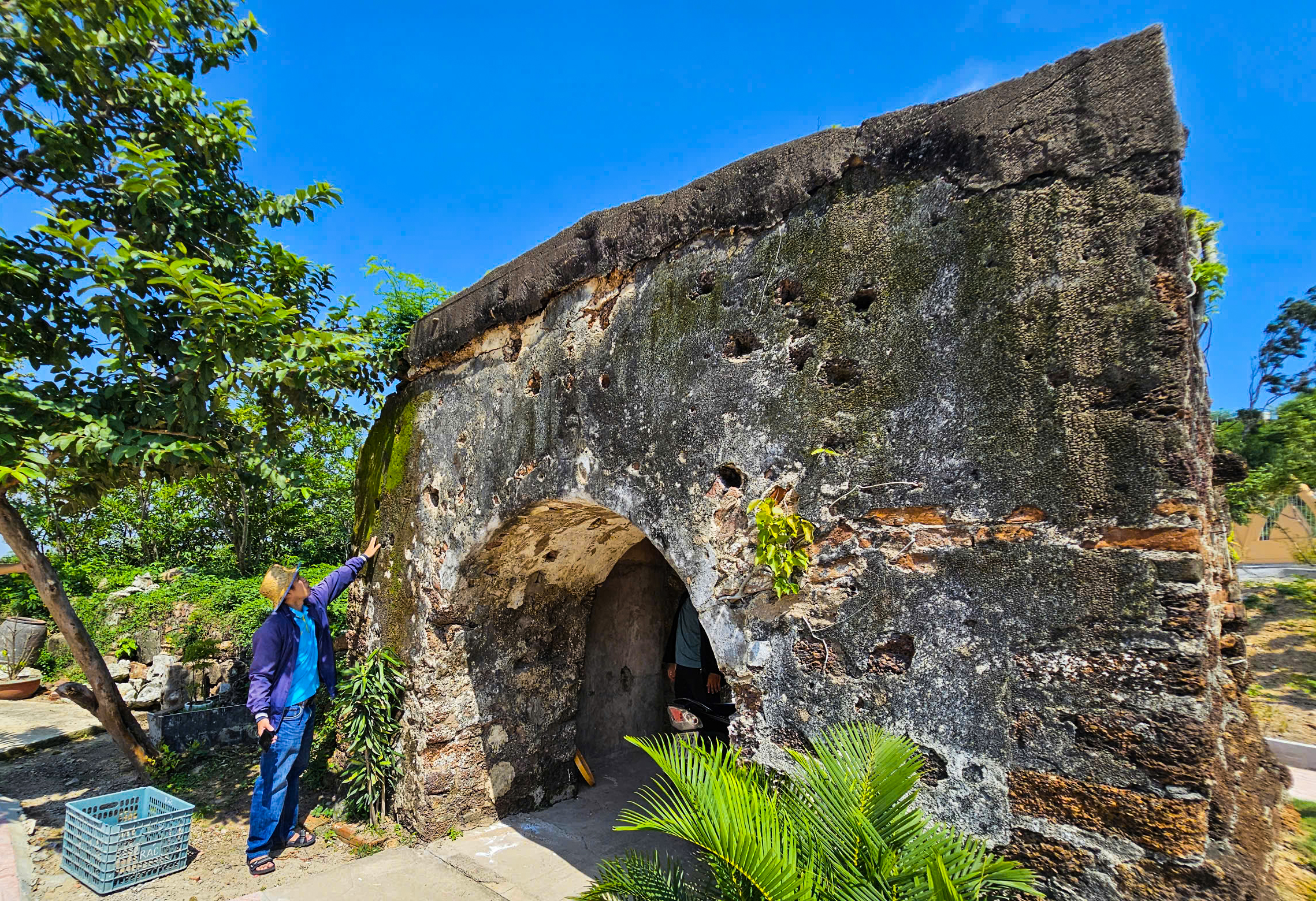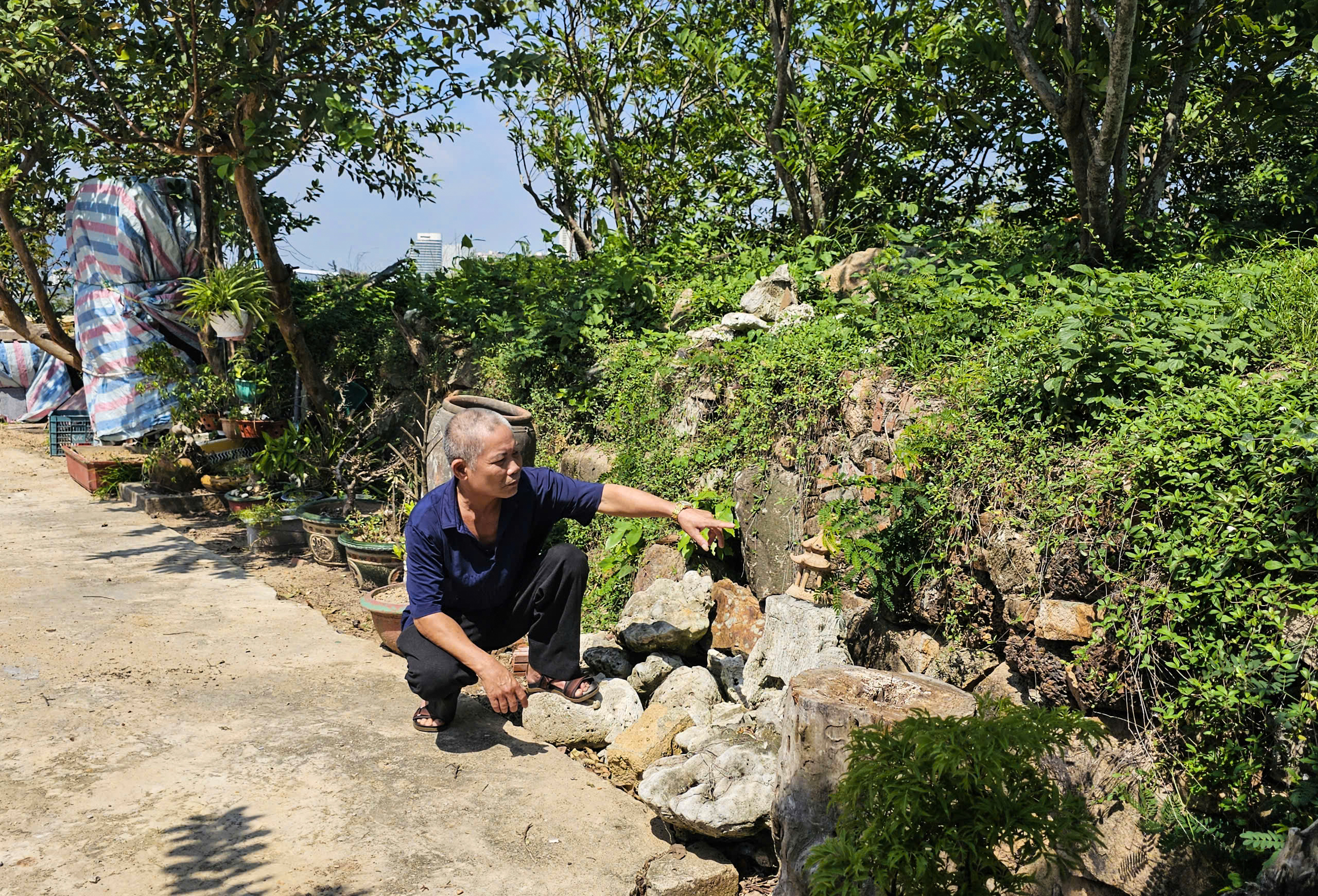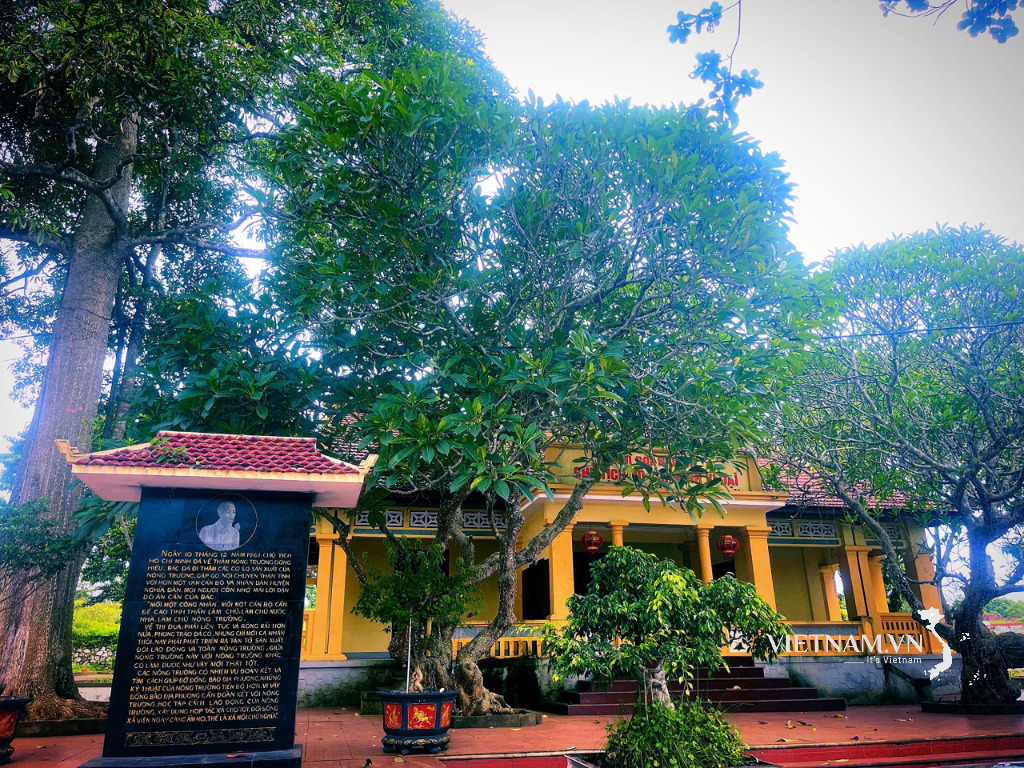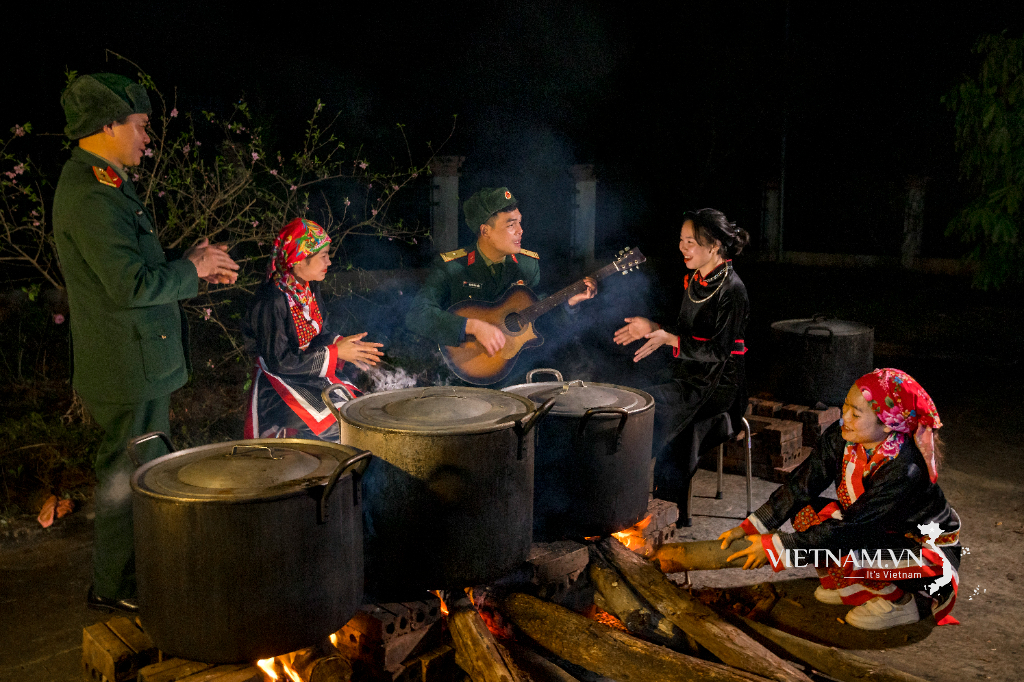According to the relic records, the Phuong Mai ancient stone rampart is located on two points of the Phuong Mai peninsula, commonly known as Vung Tau mound (or Hai Minh inside) and Kinh De mound (or Hai Minh outside), also known as Hai Khau (sea gate). Over time, the Phuong Mai ancient rampart relic is now area 9 (also known as Hai Minh), Hai Cang Ward (Quy Nhon City, Binh Dinh).

Phuong Mai Peninsula, Quy Nhon City (Binh Dinh)
Built under the Tay Son Dynasty
According to research by Dr. Dinh Ba Hoa, former Director of Binh Dinh General Museum, on Phuong Mai peninsula in Trieu Chau mountain range, there is an ancient rampart built entirely of stone, which is still quite intact. This is a very special type of relic, the only remaining in Quy Nhon land, a military defense structure built by dynasties in history.
Regarding this rampart, the Dai Nam Nhat Thong Chi book recorded: "Tran Thi Nai: in the east of Tuy Phuoc district, 197 truong wide, 4 truong 7 thuoc deep at high tide, 4 truong 4 thuoc deep at low tide, 6 thuoc high, 1 open gate. To the east of the sea, there is Ho-ki fortress, 27 truong in circumference, 1 open gate, a flagpole and 12 gun holes, built in the 7th year of Minh Mang, repaired in the 18th year of Tu Duc. The back of Ho-ki fortress is a rampart on Vung Tau hill, 3 truong long, 4 gun holes; inside the fortress is on Kinh-de hill, 3 truong long, 5 gun holes; inside the sack is a warehouse, containing 30,000 bushels of rice to transport to other places, this warehouse was built in the 17th year of Minh Mang".

A section of the Great Wall belonging to Phuong Mai ancient citadel, on Phuong Mai peninsula (Quy Nhon city)
The ancient rampart system of Phuong Mai was built on an uneven mountainous terrain at a high altitude. The rampart was built by cleverly stacking mountain stones of similar sizes, ensuring a solid connection between the stone blocks to create a solid rampart wall running along the top of the mountain.
This is a unique military architectural work, built scientifically , demonstrating the ancient art of building citadels and ramparts, which were placed in dangerous places, allowing for both guarding and observing, and becoming an important barrier against the enemy.
The ancient rampart is an architectural relic, a defense system built under the Tay Son dynasty, and then the Nguyen dynasty. This place is a defense line but also a battlefield of countless battles.
Destination for history buffs
Mr. Nguyen Thai Hoc (in area 9, Hai Cang Ward) said that fishermen here often call Phuong Mai stone rampart the ancient citadel. In 2010, Phuong Mai ancient rampart was ranked as a relic by the People's Committee of Binh Dinh province. Along with the statue of Duc Thanh Tran and the relic of Tam Toa mountain, Phuong Mai ancient rampart has become a destination for those who love to learn about history, when they have the opportunity to set foot on Phuong Mai peninsula.

The ramparts of Phuong Mai ancient citadel
Dr. Dinh Ba Hoa said that in the east of Thi Nai lagoon, Phuong Mai peninsula is likened to a giant screen blocking the sea for Quy Nhon city. Thi Nai seaport has an important strategic position, so the ancients built a very solid fortress called Ho Ky on Tam Toa mountain (also known as Da Den mountain). Behind the fortress, at Vung Tau hill and Kinh De hill are stone ramparts.
According to Dr. Dinh Ba Hoa, the defense line on Tam Toa mountain was built under the Tay Son dynasty and completed during the Nguyen dynasty. The stone rampart on Kinh De hill is about 100 m long, the starting point connecting to Ho Ky fortress to protect Ho Ky fortress if attacked from behind, and at the same time prevent enemy troops from advancing from the eastern slope of the mountain into Thi Nai estuary to capture the fortress. The rampart on Vung Tau hill is about 600 m long, with the task of preventing enemy troops from traveling by water to Hai Giang, then following the eastern slope of the mountain to occupy the western side of the fortress and occupy Thi Nai estuary.
"Under the Nguyen Dynasty, military officers arranged nine gun holes on this defense line. Phuong Mai stone rampart is an important part of the system of military works to defend the estuary, including fortresses, flagpoles, garrisons... After more than 200 years, many sections of the stone rampart have been damaged and covered by bushes, but the sections on the mountain top are almost intact," added Dr. Dinh Ba Hoa.

From Phuong Mai peninsula looking towards Quy Nhon city
Mr. Phan Tuan Hoang, Head of the Department of Culture and Information of Quy Nhon City, said that currently, the People's Committee of Quy Nhon City has built and introduced tourism products in Hai Minh fishing village, so that people and tourists can conveniently visit the Phuong Mai ancient citadel and Tam Toa mountain. According to the management hierarchy of the relic, in the near future, the Phuong Mai ancient citadel will be handed over to Hai Cang Ward to manage, protect and exploit to attract tourists .
Source: https://thanhnien.vn/luy-da-co-hon-200-nam-la-cong-trinh-phong-thu-quan-su-cua-cac-trieu-dai-185241117171843221.htm



































































































Comment (0)